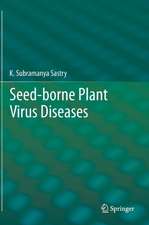Korea: A Geomedical Monograph of the REPUBLIC OF KOREA: Medizinische Länderkunde Geomedical Monograph Series, cartea 6
Autor Chin-thack Soh Ilustrat de Eckart Degeen Limba Engleză Paperback – 20 noi 2013
Preț: 368.73 lei
Preț vechi: 388.13 lei
-5% Nou
Puncte Express: 553
Preț estimativ în valută:
70.57€ • 73.40$ • 59.14£
70.57€ • 73.40$ • 59.14£
Carte tipărită la comandă
Livrare economică 13-27 martie
Preluare comenzi: 021 569.72.76
Specificații
ISBN-13: 9783642671371
ISBN-10: 3642671373
Pagini: 168
Ilustrații: XV, 149 p.
Dimensiuni: 210 x 297 x 9 mm
Greutate: 0.42 kg
Ediția:Softcover reprint of the original 1st ed. 1980
Editura: Springer Berlin, Heidelberg
Colecția Springer
Seria Medizinische Länderkunde Geomedical Monograph Series
Locul publicării:Berlin, Heidelberg, Germany
ISBN-10: 3642671373
Pagini: 168
Ilustrații: XV, 149 p.
Dimensiuni: 210 x 297 x 9 mm
Greutate: 0.42 kg
Ediția:Softcover reprint of the original 1st ed. 1980
Editura: Springer Berlin, Heidelberg
Colecția Springer
Seria Medizinische Länderkunde Geomedical Monograph Series
Locul publicării:Berlin, Heidelberg, Germany
Public țintă
ResearchCuprins
A. The Land and Its People.- B. Health Facilities, the Health Professions, and Public Health Services.- C. The Diseases of the Country.- D. Factors Affecting Health Problems.- References.- Illustrations.- Maps.- Figures.- Fig. 1. Monthly temperature in Seoul by means (1931–I960).- Fig. 2. Mean air temperature (°C) Annual.- Fig. 3. Mean air temperature (°C) January.- Fig. 4. Mean air temperature (°C) August.- Fig. 5. Amount of precipitation (mm) annual.- Fig. 6. Age distribution 1970.- Fig. 7. Age distribution 1975.- Fig. 8. Development of total population, population of 14 years and over and economically active population, employment by industry.- Fig. 9. Korean farm house type: Central Korean type (Gyeong-gi Do).- Fig. 10. Korean farm house type: Southern Korean type (Jeonra Nam Do).- Fig. 11. Anatomical chart in Ancient Korean Medicine.- Fig. 12. Prevalence of radiological active pulmonary tuberculosis by age (1965, 1970, 1975).- Fig. 13. Incidence curve of Korean hemorrhagic fever (1951–1971).- Fig. 14. Number of gonococcus positive specimens examined during the years 1969–1973 at Severance Hospital Laboratory.- Fig. 15. Quantitative levels of nutrition in Korea.- Fig. 16. Qualitative levels of nutrition in Korea.- Fig. 17. Korean recommended dietary allowances, energy (Cal/day/adult).- Fig. 18. Korean recommended dietary allowances, protein (g/day/adult).- Maps.- Map-Plate.- Map 1 Orography of Korea 1: 3 000 000 Map-Plate.- Map 2 Administration Republic of Korea 1: 1 500 000 Map-Plate.- Map 3 Distribution of Population, Republic of Korea.- Map 3 a Net Migration in and out of Seoul.- Map 3 b Net Migration in and out of Busan.- Map 3 c Invasion Routes of Cholera.- Map-Plate.- Map 4 Health Facilities, Republic of Korea.- Map 4 a Distribution of LeprosyPatients by Birth Place.- Map 4 b Morbidity Rate of Japanese Encephalitis Map 4 c Distribution of Microfilaria Positive Cases Map-Plate.- Map 5 Agrargeographical Survey.- Map 5a Example of Land Use: Alluvial Plain (Honom Plain Near Iri, Province Jeonra Bug Do).- Map 5 b Example of Land Use: Hilly Area (Near Jochiweon, Province Chungcheon Nam Do).- Map 5 c Example of Land Use: Mountainous Area (Taebaeg Mountains West of Mugho, Province Gang-weon Do).









